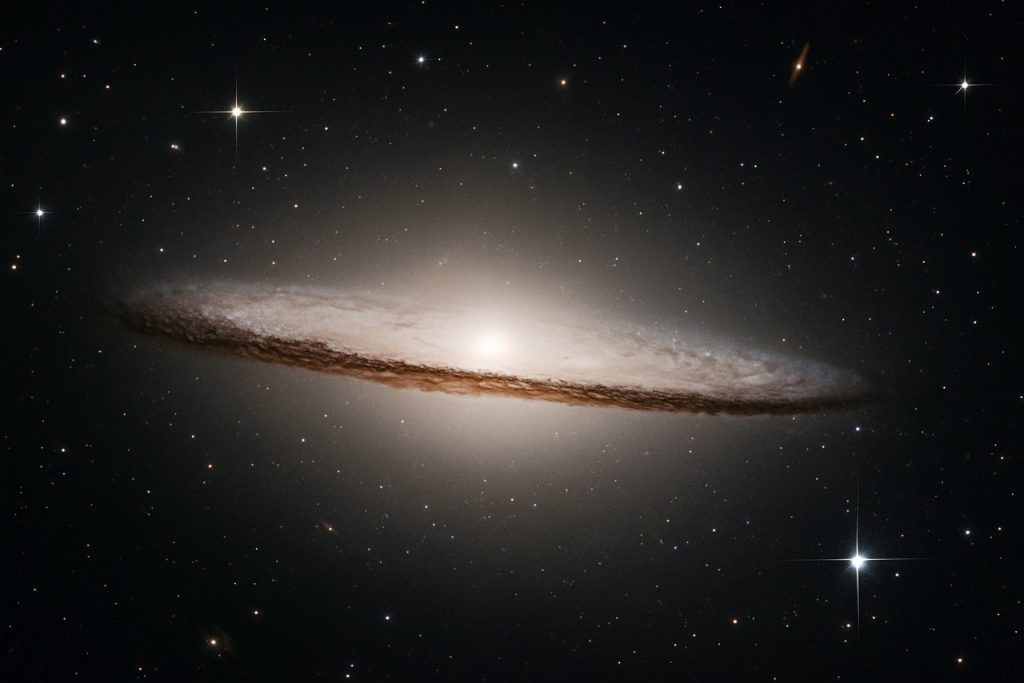
NASA’s Webb Telescope Uncovers Sombrero Galaxy’s Violent Secret—New Images Rewrite Our Cosmic History!
The James Webb Space Telescope exposes the Sombrero Galaxy’s hidden turbulence, unveiling new clues to its mysterious evolution.
• 30 million light-years from Earth
• 2,000+ globular clusters spotted
• Near-infrared images pierce galactic dust
• Evidence suggests major galactic collision
Astronomers around the globe are buzzing as NASA’s James Webb Space Telescope has delivered yet another jaw-dropping image—this time, capturing the Sombrero Galaxy like never before. Scientists say the reveal is more than just stunning; it’s rewriting our understanding of one of the universe’s most iconic spiral galaxies.
The Sombrero Galaxy—sitting 30 million light-years from Earth and gleaming on the edge of the Virgo Cluster—has always caught the eye of stargazers. Its dramatic dust lane and bulging core make it one of the sky’s most recognizable shapes. But the galaxy’s real secrets have been shrouded behind clouds of cosmic dust—until now.
What Did the Webb Telescope Capture This Time?
NASA’s Webb Telescope used its advanced NIRCam to punch through the Sombrero Galaxy’s thick dust. The result: a crystal-clear look at its glowing heart, a region typically masked in visible light. Pairing this near-infrared data with recent mid-infrared scans, scientists are seeing the Sombrero in a vibrant new light.
The combined images unveil the galaxy’s dense, brilliant bulge and a ravishing disk of cold dust. These details, once hidden, are now captured with dazzling precision—and are offering astronomers unprecedented insight into the galaxy’s star formation and structural oddities.
Q: Why Is Infrared Imaging So Groundbreaking Here?
Traditional telescopes, like the iconic Hubble, see mostly in visible wavelengths. In visible light, the Sombrero’s dust lanes create dark, mysterious shadows. But Webb’s near-infrared images allow scientists to peer straight through the dust, exposing previously invisible stellar nurseries and faint background galaxies.
Q: What Clues Point to a Violent History?
Beneath the galaxy’s serene appearance, astronomers have found telltale signs of chaos. Over 2,000 globular clusters—tight knots of ancient stars—swirl around the Sombrero, many with surprising chemical fingerprints. Unlike clusters born from a single cloud, these show evidence of a collision, hinting that the Sombrero may have devoured another galaxy in the distant past.
Chemical variety among the clusters—marked by differences in elements like oxygen, neon, and iron—paints a picture of multiple origins. Such diversity almost guarantees that the Sombrero experienced at least one major galactic merger, tearing apart and blending the stars, dust, and gases of a captured companion.
How Does Webb’s Power Outshine Previous Telescopes?
Webb’s sensitivity to near-infrared lets astronomers pick out individual stars—including luminous red giants—within and beyond the Sombrero itself. This sharp vision even exposes background galaxies at mind-boggling distances, adding a cascade of colors to every Webb snapshot. By analyzing these galaxies’ hues and brightness, astronomers can decipher their distances and learn more about the early universe.
What’s Up with the Sombrero’s Warped Disk?
Most surprising: Webb’s view uncovered that the Sombrero Galaxy’s inner disk is warped—a subtle but unmistakable tilt, as if part of the galaxy is twisting into a cosmic funnel. This strange shape matches predictions for galaxies that have undergone a violent merger. The gravitational shockwaves from collisions ripple through the disk for billions of years, twisting its structure and hinting at past upheaval.
The phenomenon reinforces the idea that even galaxies that appear peaceful can hide turbulent histories in their bones. Each warped ripple and scattered cluster stands as evidence of the universe’s wild side.
How Can I Explore More?
For official images and ongoing discoveries, visit NASA and ESA’s sites. Learn about cosmic collisions, cutting-edge astronomy, and the future of space science directly from the teams making history.
Stay Curious—The Universe Is Always Full of Surprises!
- Check NASA and ESA’s official missions for image updates
- Follow science news for the latest Webb findings
- Try amateur astronomy—Sombrero is visible with modest telescopes in spring
- Stay tuned: Webb will deliver more galactic secrets in 2025 and beyond!



